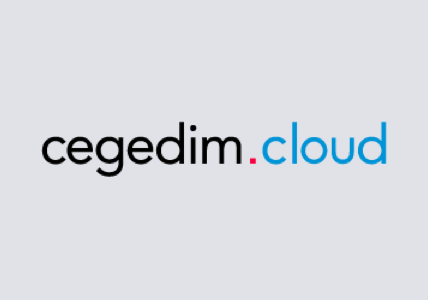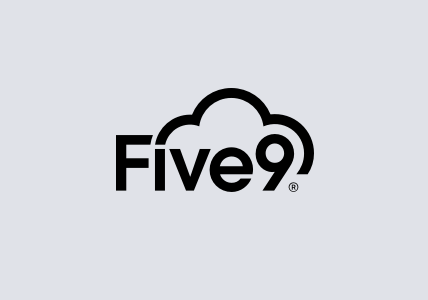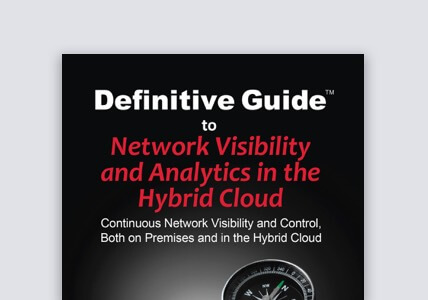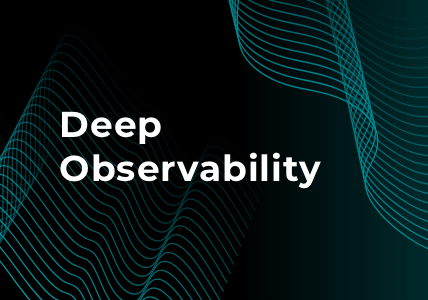Partner Spotlight: The Power of 3 with Gigamon, Dynatrace, and Trace3
In this spotlight, we look at not one but two Gigamon partners — Dynatrace and Trace3 — who, along with Gigamon, form an observability dream team. We spoke with Srinivas Chakravarty, vice president of cloud ecosystem at Gigamon, and Nishant Rama, director of solutions engineering at Dynatrace, about how the integration of the Dynatrace Software Intelligence Platform with the Gigamon Deep Observability Pipeline delivers a unified view across hybrid cloud infrastructure to help improve organizations’ security posture and outcomes.
Then Paul Scuba, practice director of cloud applications and infrastructure at Trace3, a leading technology consultancy, walked us through their team’s process and how they help customers gain greater insight into their hybrid cloud infrastructure with Gigamon and Dynatrace.
Gigamon: Can you explain the concept of unified observability and its significance in modern IT operations?

Srinivas: Unified observability integrates the analytics, correlations, and dashboards from the Dynatrace Software Intelligence Platform with the network-derived intelligence and insights from the Gigamon Deep Observability Pipeline to help detect and remediate security vulnerabilities and troubleshoot application performance and outage issues. Customers often attribute performance issues to a network issue and may spend unnecessary time searching there when the problem is higher up in the application stack. Time is money — every minute spent troubleshooting could cost customers millions.
Unified observability delivered by the Dynatrace–Gigamon solution provides a one-stop shop for SREs, DevSecOps, CloudOps, and NetOps teams to correlate all host-based and network telemetry in a single pane of glass, with the ability to create metrics, set and monitor service level objectives (SLO), establish thresholds for alerts, automate notifications for admin intervention, and quickly identify and remediate application issues regardless of where the bottlenecks occur — public cloud, hybrid cloud, or on-prem environments running VMs or containers.
Gigamon: How does Dynatrace contribute to unified observability, and what are the key features in this context?
Nishant: Dynatrace is the unified observability platform. Metrics, events, logs, and traces are just a small part of the overall observability ecosystem. This is where Dynatrace comes in. We integrate, coexist, and ingest the wider ecosystem, whether it’s ingesting OTel spans, grabbing Prometheus metrics, or consuming network telemetry data.
We then provide Dynatrace’s best-in-class context to understand where the data came from and what type it is. Then it’s fed into our AI, Davis, which auto-baselines those metrics to provide a seamless unified observability platform with little to minimal configuration required.
Gigamon: What role does Gigamon play in enhancing observability, particularly in terms of network visibility and data access?
Srinivas: Security is priority zero for our customers. Gigamon serves large enterprise and public sector customers with workloads running across on-prem and public/hybrid cloud environments, creating a complex maze of network traffic flowing across hybrid cloud infrastructure. Customers recognize security in the cloud is a shared responsibility model, making visibility into all traffic flowing across these environments critical.
Unfortunately, we hear too many stories about ransomware attacks and breaches. It’s now commonplace to operate under the assumption that a breach has already happened, making it necessary to ensure complete visibility into 100 percent of the traffic on the network — not only North-South but also East-West, container, and encrypted traffic on-prem and in the cloud.
Often, one of the first things hackers do once they breach an environment is turn off logging or record and replay logs to mask their presence. Almost all observability tools and application developers rely on logs, but in cases of a breach, packets and network telemetry provide the single source of truth. Packets can’t be manipulated; they’re always on and add critical information necessary for a defense-in-depth strategy.
Gigamon exposes data exfiltration, port spoofing, expired TLS certificates, crypto mining activities, weak ciphers, and other vulnerabilities. Through our integration with Dynatrace, joint customers can include this detailed network telemetry with their log data collection to alert on potential security risks and meet or confirm compliance requirements.
An innovative and award-winning technology Gigamon brought to market last fall really helps security teams detect anomalous behavior. A recent survey reported that 91 percent of traffic on the network is encrypted. However, bad actors are also encrypting their attacks to evade detection by security tools. To help customers address this, Gigamon delivered Precryption™ technology. Precryption technology offers plain-text visibility into encrypted traffic, either before it’s encrypted or after it’s decrypted, without decryption or having to use or manage keys, and sends that traffic to tools for threat detection, forensics, and analysis.
Gigamon: Can you describe some practical use cases where the integration of Dynatrace and Gigamon has provided significant benefits for organizations?
Paul: When migrating applications to the cloud, organizations often face challenges related to performance optimization and network connectivity. The integration of Dynatrace and Gigamon helps organizations overcome these challenges by providing visibility into both application performance and network traffic across-hybrid cloud environments. This allows organizations to optimize application performance, ensure seamless connectivity between on-premises and cloud instances, and identify potential bottlenecks or security vulnerabilities during migration. Additional use cases include optimizing resource utilization, enhanced security monitoring, and improving troubleshooting efficiency.
Gigamon: How do you ensure seamless integration and interoperability between Dynatrace and Gigamon solutions within complex IT environments?
Paul: This requires a comprehensive approach that encompasses several key strategies, including detailed planning and design, API and plug-in integration, data correlation and enrichment, standardization and automation, testing and validation, and continuous monitoring and optimization. With these strategies, organizations can ensure seamless integration and interoperability between Dynatrace and Gigamon solutions within complex hybrid-cloud environments, enabling them to achieve greater visibility, control, and efficiency across their infrastructure and applications.
Gigamon: What are some common challenges faced by organizations in achieving unified observability, and how can Trace3 address these challenges effectively?
Paul: One common challenge is siloing and fragmented data: Organizations often operate with siloed monitoring tools and data sources, leading to fragmented visibility and difficulty correlating data across different layers of the IT stack. Trace3 addresses this by implementing an integrated observability platform that consolidates data from disparate sources, including application, infrastructure, network, and security tools, offering a unified view of the hybrid-cloud environment.
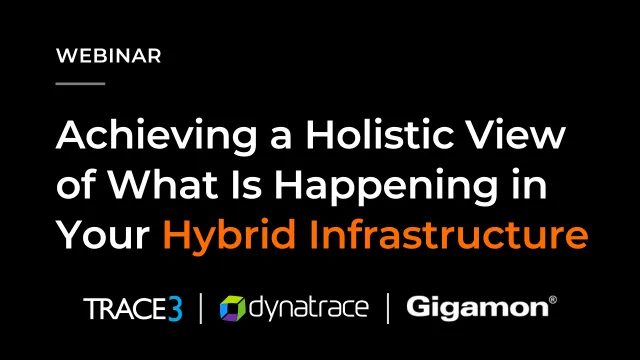
There’s also the increasing complexity of multi-cloud environments, where organizations may struggle to monitor and manage performance, security, and compliance effectively. Other challenges include lack of automation and AI-driven insights, scalability and performance monitoring, and skills gaps and resource constraints. With its expertise in hybrid cloud architectures, Trace3 can tailor solutions to an organization’s unique requirements and provide visibility into both on-premises and cloud-based resources, helping organizations optimize performance, enhance security, and ensure compliance across their entire hybrid-cloud infrastructure.
Gigamon: In what ways do Gigamon and Dynatrace support Trace3’s goal of delivering positive business outcomes to companies?
Paul: Overall, the combined capabilities of Gigamon and Dynatrace’s combined capabilities provide enhanced visibility and insights, improved performance and reliability, strengthened security, cost optimization and resource efficiency, streamlined operations, and faster time to resolution.
Gigamon: How do you approach the customization and configuration of Dynatrace and Gigamon solutions to meet specific customer requirements and use cases?
Paul: For Dynatrace solutions, we first seek to understand the customer’s needs then work with them on a deployment strategy. The next steps are configuration for specific use cases, integration with existing tools, and finally, providing training and support for staff.
Our process with Gigamon begins with assessing the customer network. We tailor Gigamon deep observability solutions to each customer’s needs and environment and dial in security and performance enhancements. We look at how the scalability and flexibility of Gigamon can serve the customer as they grow and offer ongoing optimization and support.
Gigamon: What strategies do you employ to demonstrate the ROI and value proposition of unified observability solutions to potential customers?
Paul: First, we discuss customer pain points and objectives: What are their current systems’ limitations and performance issues and their business impacts? We quantify the cost of these inefficiencies in downtime expenses, staff for troubleshooting, and SLA violation penalties. Then we present a detailed cost-benefit analysis that includes the total cost of ownership versus ROI, factoring in financial gains and indirect benefits, such as improved customer satisfaction.
We customized product demos to reflect the customer’s environment, using real data when possible and simulating scenarios highlighting the solution’s effectiveness. Clear, understandable metrics that resonate with business outcomes, such as improved response times, reduced incident recovery times, and lowered operational costs, help drive home the solution’s value and business benefits. We also showcase how integration with the customer’s existing tools would enhance the value of their current investments by providing deeper and more comprehensive insights.
Sharing detailed case studies, success stories, and testimonials from similar companies is also effective. And offering a limited-time pilot or proof of concept can allow the customer to see firsthand the solution’s impact on their operations and to alleviate their concerns about its effectiveness and integration.
Finally, we look toward the future, emphasizing ongoing support and improvements, and explain how the observability solution can scale with the customer’s growth and adapt to future technology trends.
Gigamon: Can you give insights into future trends and advancements in unified observability and how these might impact the offerings of Dynatrace, Gigamon, and Trace3 resellers?
Paul: AI and machine learning are becoming integral to unified observability platforms by automating data analysis, predicting potential issues, and providing actionable insights. Dynatrace already incorporates AI-driven analytics, but future advancements could lead to even deeper and more proactive problem-solving capabilities.
Gigamon could integrate more AI features to optimize traffic filtering and threat detection. For Trace3 resellers, this means offering solutions that are increasingly sophisticated and capable of addressing complex, dynamic environments.
There’s also a growing need for cloud-specific observability solutions, including better support for Kubernetes, serverless architectures, and microservices. Dynatrace and Gigamon enhance these capabilities and provide more granular and adaptive tools to manage hybrid and multi-cloud environments. Trace3 resellers will benefit by being able to offer tailored solutions that align closely with architectural shifts in enterprise IT.
Other trends that will impact our offerings include expanded integration ecosystem, edge computing, increased focus on security and compliance, user experience and business outcomes, and sustainability in IT operations.
These advancements suggest a future where unified observability becomes even more integral to managing complex IT environments, enhancing performance, and driving business innovation. Companies like Dynatrace and Gigamon, and their resellers like Trace3, will need to continuously adapt and innovate to meet these evolving needs.
Interested in Becoming a Gigamon Partner?
Learn more about the Gigamon Catalyst Partner Program and sign up today!

CONTINUE THE DISCUSSION
People are talking about this in the Gigamon Community’s Security group.
Share your thoughts today
